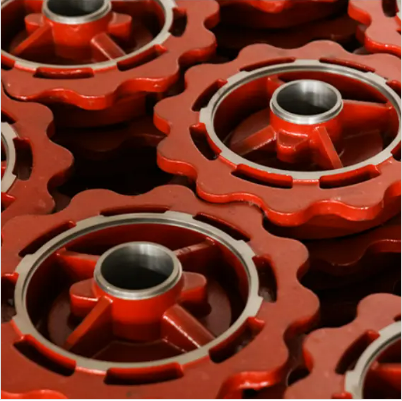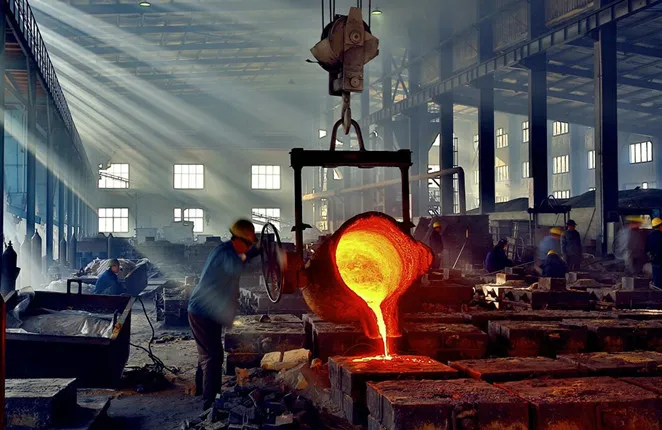Mobile:+86-311-808-126-83
Email:info@ydcastings.com
English
Jan . 20, 2025 07:26
Back to list
turbine housing turbocharger
Turbine housings are often overlooked yet crucial components in turbocharger systems. These intricately designed parts serve as the gateway through which exhaust gases power a turbocharger, ensuring optimal performance and efficiency. When choosing turbine housing for turbochargers, it's essential to understand their impact on vehicle performance, reliability, and overall turbocharger longevity.
Proper sizing of the turbine housing is essential as well. A housing that is too small may restrict exhaust flow, leading to increased backpressure and inefficient turbocharger operation. On the other hand, excessively large housings may extend turbo lag unacceptably, causing noticeable delays between throttle application and power increase. The goal should always be a balanced approach that considers engine displacement, desired power band, and driver expectations. When sourcing turbine housings, product authenticity and manufacturer reputation are paramount. Trusted manufacturers demonstrate reliability in their specifications, safety parameters, and compliance with industry standards. Always seek products with verifiable performance testing and endorsements. Consulting with experts and reviewing credible sources and user testimonials can provide insights that reinforce purchasing decisions. Lastly, regular maintenance and inspections further enhance the trustworthiness of turbocharger systems. Monitoring the turbine housing for signs of wear, cracking, or thermal damage is integral to prolonging its lifespan and preempting potential failures. Partnering with professional service providers to facilitate routine inspections ensures that these components remain within operational parameters, delivering consistent and reliable performance. In conclusion, understanding the intricacies of turbine housing for turbochargers provides a significant advantage in maximizing vehicle performance and ensuring durability. Careful consideration of material, design, and size, paired with reliable sourcing and maintenance, establishes a foundation for exceptional performance and longevity. Whether for everyday drives or high-performance applications, turbine housing plays a crucial role in the efficient operation of turbochargers.


Proper sizing of the turbine housing is essential as well. A housing that is too small may restrict exhaust flow, leading to increased backpressure and inefficient turbocharger operation. On the other hand, excessively large housings may extend turbo lag unacceptably, causing noticeable delays between throttle application and power increase. The goal should always be a balanced approach that considers engine displacement, desired power band, and driver expectations. When sourcing turbine housings, product authenticity and manufacturer reputation are paramount. Trusted manufacturers demonstrate reliability in their specifications, safety parameters, and compliance with industry standards. Always seek products with verifiable performance testing and endorsements. Consulting with experts and reviewing credible sources and user testimonials can provide insights that reinforce purchasing decisions. Lastly, regular maintenance and inspections further enhance the trustworthiness of turbocharger systems. Monitoring the turbine housing for signs of wear, cracking, or thermal damage is integral to prolonging its lifespan and preempting potential failures. Partnering with professional service providers to facilitate routine inspections ensures that these components remain within operational parameters, delivering consistent and reliable performance. In conclusion, understanding the intricacies of turbine housing for turbochargers provides a significant advantage in maximizing vehicle performance and ensuring durability. Careful consideration of material, design, and size, paired with reliable sourcing and maintenance, establishes a foundation for exceptional performance and longevity. Whether for everyday drives or high-performance applications, turbine housing plays a crucial role in the efficient operation of turbochargers.
Next:
Latest news
-
Materials Used in Manufacturing Cap End Pipe FittingsNewsNov.24,2025
-
Material Properties of CF8M CastingNewsNov.24,2025
-
How to Inspect Pump Cap Ends for DamageNewsNov.21,2025
-
Backward Curved Impeller – Efficient Airflow Solutions for Industry | YD CastingsNewsNov.21,2025
-
Automobile Water Pump - Efficient, Quiet, Durable & ElectricNewsNov.21,2025
-
Impeller for Pumps – High-Efficiency, Durable, OEM-ReadyNewsNov.21,2025
Related PRODUCTS











